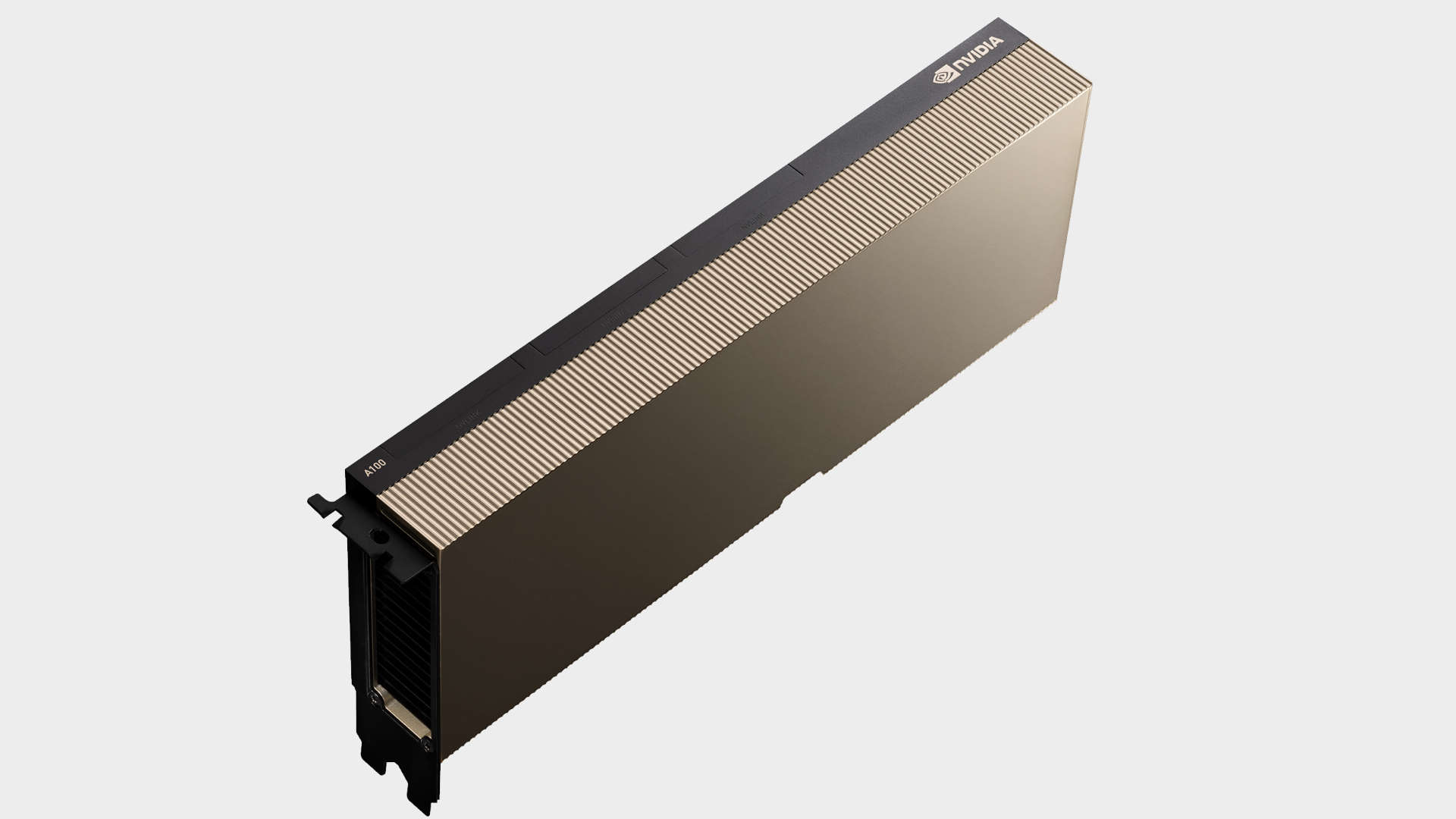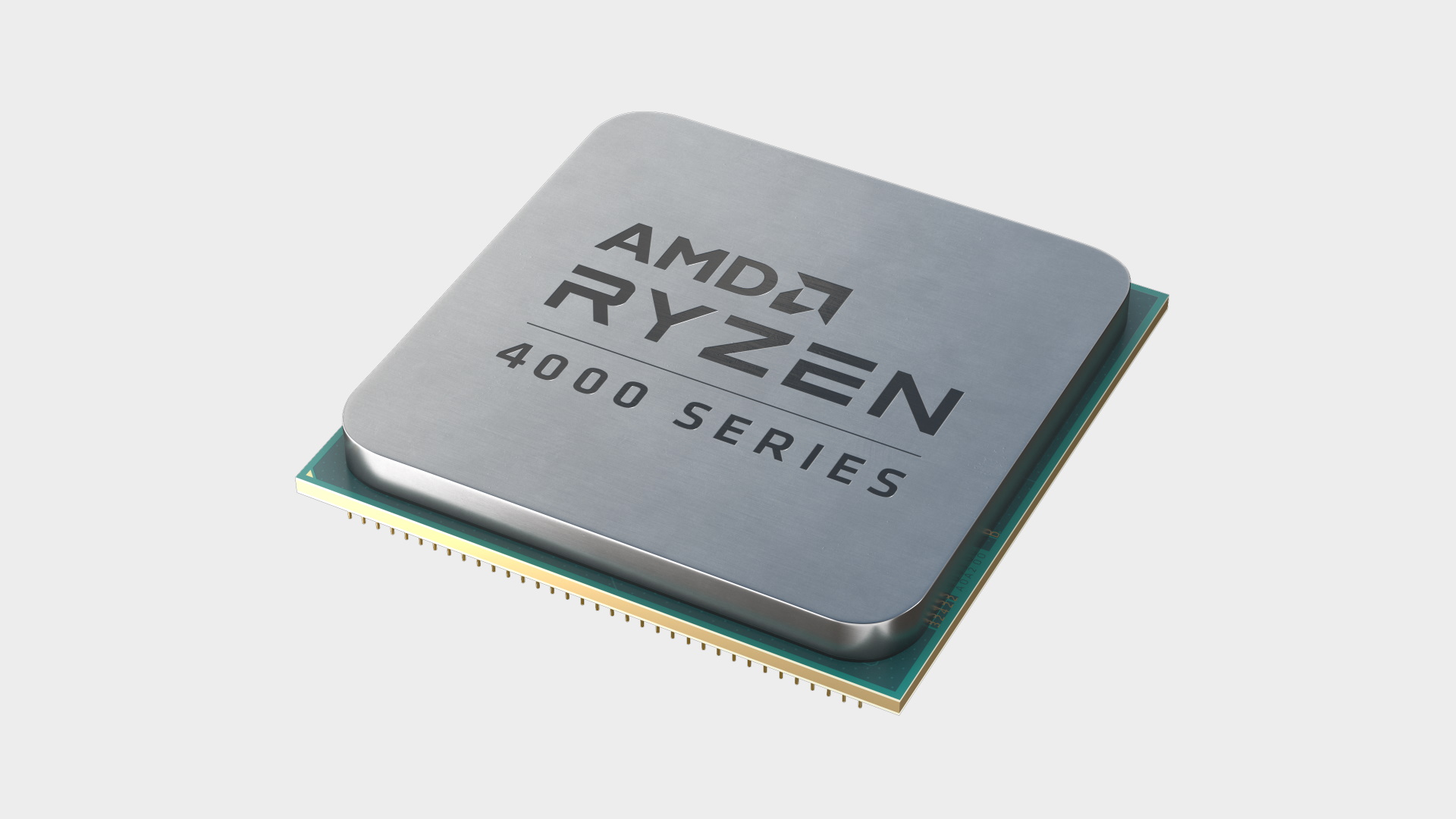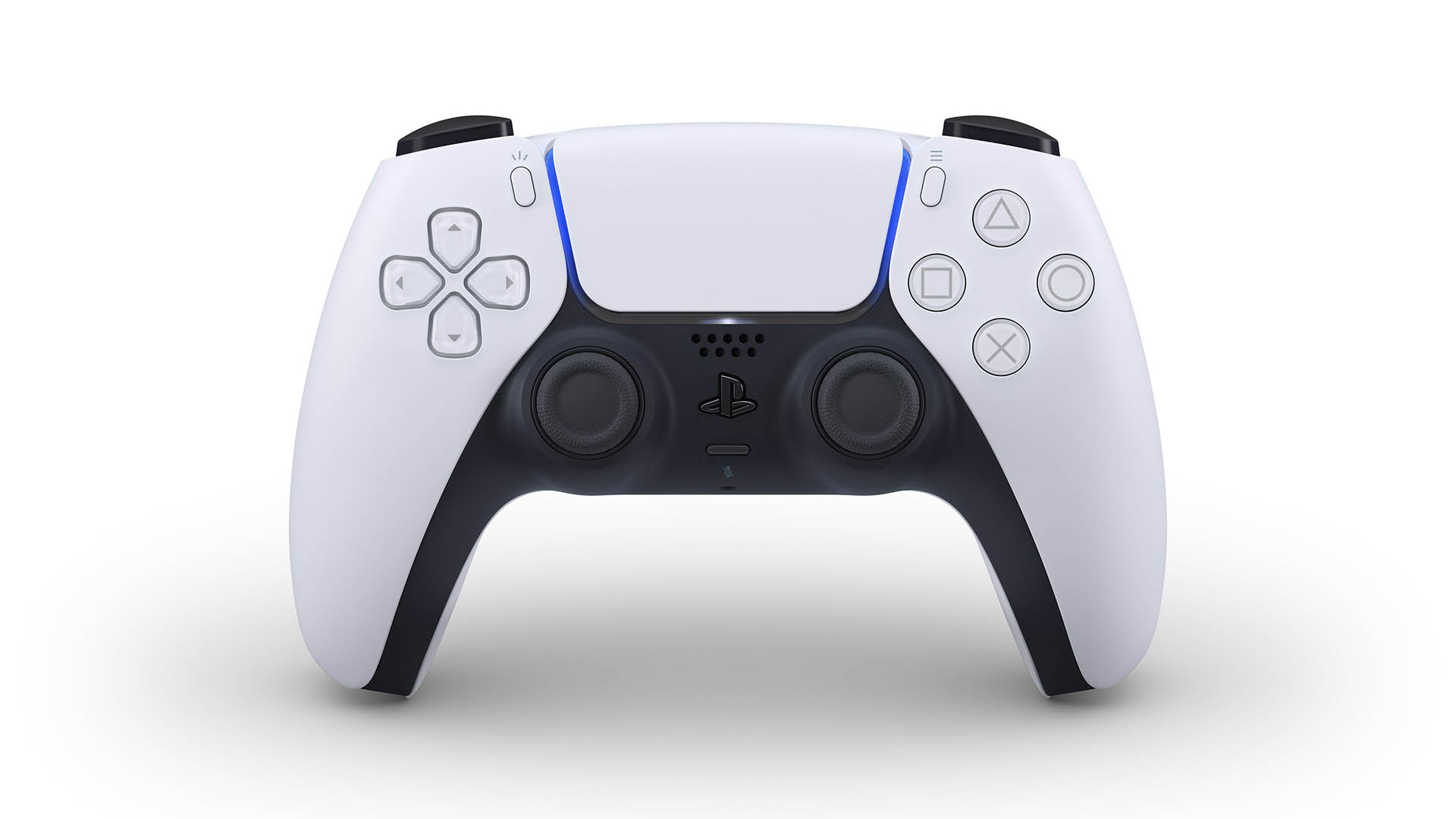Get ready for the biggest gaming hardware season ever
The new tech at least could be a highlight of 2020...

The biggest ever season of gaming hardware releases is about to hit us like some silicon tsunami. Generally speaking, we strive to avoid such hyperbole if we can help it—I'm not some cheap-suited hawker, screaming at you from my discount car lot about the BIGGEST SALE IN HUMAN HISTORY—but if you can think of a bigger period for gaming hardware then I'd like to hear it.
And then I'll proceed to tell you why you're wrong.
Of course I understand this year has already been a bust in more ways than one, and I'm not for one second suggesting a little new silicon is going to suddenly make everything better, but as tough as 2020 has been there's an imminent bright spot coming for our favourite hobby. And I'm more excited about the tech coming over the next few months than I've been about anything released in the last decade.
The end of 2020 has the potential to be a real inflection point for the industry, and it's not just reliant on one manufacturer bringing the high-tech goods to the party. In fact it's precisely because each of the big three PC tech companies is doing something... and at least two of them are going head-to-head for the first time in a very, very long time.
With Nvidia and AMD both set to release brand new, ultra-expensive, enthusiast-class graphics cards, both on new architectures, that alone would be enough to make the tail-end of 2020 worth wagging. But there is also Intel shipping its first new Xe graphics chips at the other end of the market. Sure, it's not going to have the pixel-pushing prowess of the RDNA 2 and Ampere monster silicon, but it could be the start of something big. Or maybe just disruptive. Or a fascinating failure. I mean Intel is on a rather negative tear right now…
There's also the next generation of AMD processors, which promise to be so much more than just some iterative CPU release. And it could genuinely shift the balance of power in the processor market far more than the previous three generations of Ryzen.
Oh, and there are a couple of closed-box PCs shipping from Sony and Microsoft over the holidays, packed full of interesting tech and some funky algorithms. People seem quite excited about those too.
Keep up to date with the most important stories and the best deals, as picked by the PC Gamer team.

Nvidia vs AMD - the big GPU battle royale
Okay, it's not like 'there can be only one'. There's not going to be a lightning strike quickening the moment the first independent post-embargo 3DMark result gets posted, pitting the top Nvidia Ampere GPU against the potentially mighty AMD Big Navi/RDNA 2 graphics card. It doesn't matter who gets to call their new GPU 'the world's fastest consumer graphics card' the other side will still sell a whole bunch of GPUs, and the rabid fan bois will still defend them to the hilt.
But this is a head-to-head moment the likes of which we've not seen from AMD and Nvidia in recent memory, and whoever does take that crown it will send ripples out across the PC gaming industry.
If Nvidia remains atop its pedestal then all the hype surrounding the Big Navi release could come crashing down in a very Vega way, but if AMD is able to create a high-end card that can topple the best GeForce GPU that will be the first time it's held the top spot since the dark ages.
Nvidia's Ampere GPU architecture is the first new gaming silicon coming from the green team since it released the Turing chips back in 2018, kickstarting the real-time ray tracing generation which has since been picked up by both the next-gen consoles. There are more rumours than solid facts swirling around about the next GeForce GPUs, though there seems to be a consensus that the new flagship cards will come with huge chunks of silicon, replete with more cores, higher-performance ray tracing silicon, and speedier memory.
Nvidia is likely to blink first, releasing its new GPUs ahead of AMD, with a potential reveal in August and a now-confirmed release in September. A rumoured September 17 date has been floating around for a little while—and sources around manufacturers have essentially confirmed to us that it's coming that month—but all we've heard from Nvidia itself has been about the datacentre versions, including a $12,500 PCIe A100 card.
And they most definitely ain't for gaming.

What we can be confident about is that there is an Ampere GPU out there which has appeared in a 3DMark Time Spy benchmark posting 31% higher performance than an RTX 2080 Ti of this generation. And the scuttlebutt is that isn't even the highest spec one.
The other suggestion is that the reworked RT Cores at the heart of Ampere will deliver ray tracing performance four times higher than Turing, and that could potentially negate the performance cost of turning the advanced graphics feature on with the RTX 3000-series cards.
Against that we have AMD set to launch its first discrete RDNA 2 graphics cards, the first to support real-time ray tracing from team red, and colloquially known as Big Navi. The rumour field has been intensifying around the new Radeon GPUs too, but with such wild speculation that it's growing increasingly hard to delineate potential fact from wild desires.
Every week there seems to be a new rumour, often from anonymous sources of some YouTube channel, which claim AMD's Big Navi GPUs will be more powerful than the sun and be launched tomorrow. The latest, however, claims that the first validation samples from TSMC's manufacturing line have only just been sent for driver development. And that PCB designs for card manufacturers haven't been finalised either.
That leans into the expectation that the RDNA 2 Radeon cards aren't going to be launching until October or November, giving Nvidia a bit of a head-start. But that also allows AMD to really tailor its GPU release against Ampere, which will very much be a known quantity by then.
And if the rumours of a ~50% performance boost over Nvidia's RTX 2080 Ti end up being true, Ampere may only have a short time to shine before it gets eclipsed by a resurgent AMD GPU division. Though with other rumours suggesting in best-case scenarios AMD's finest is only beating the 2080 Ti by 15%, it might be that someone has misheard some numbers from their anonymous sources...
Whatever the eventual truth, the Radeon team has been taking design notes from its Ryzen CPU division, with a specific team assembled by AMD's Suzanne Plummer tasked with boosting the efficiency of RDNA 2 GPUs aiming to hike up the clock speed of the graphics silicon. Basically AMD has been looking to inject a little Zen magic into the Big Navi project.
And we all know how successfully disruptive Ryzen has been in the CPU market. If AMD can pull it off on the graphics side Nvidia should be worried, and if I'm honest there are signs that, if it's not worried, the green team is at least expecting some more serious high-end competition in this generation.

Intel's tiger-striped Xe tech
The new Intel Tiger Lake laptops are set to launch very soon, presumably in time for the big back to school sales in August and early September. Intel teased 'something big' on September 2, and has effectively confirmed that will be Tiger Lake. But another new Intel processor name, and another lake to add to the long list of CPU codenames, doesn't really inspire a whole lot of excitement on its own, but there's more to it than just another 10nm mobile chip.
This will be the first range of products to take advantage of the new Intel Xe graphics architecture, both inside the CPU itself, and potentially as a discrete mobile GPU too.
Though admittedly Intel hasn't had a great run of things recently. It's 10nm process has been a struggle to manufacture for many years now, meaning it's had to squeeze more out of its ageing 14nm node and the geriatric Skylake architecture. And now Intel's had to admit it's also having issues with its upcoming 7nm process too, leading to delays and an increased need to outsource manufacturing to third parties, such as TSMC.
And, historically, Intel's not been successful when trying to build GPUs that aren't just designed to run a monitor and maybe a video or spreadsheet. Slap some graphics silicon into a CPU and Intel is fine, try and produce a discrete GPU capable of competing with the best of them, and it's not got a great track record.
So why get excited about the potential of Intel Xe? For all its recent issues, there are still a whole lot of smart engineering people within Intel and, even if this first flush of Xe silicon doesn't end up changing the world it's still a beginning. But if Intel can come up with a way of pairing a discrete version of its Xe GPU with the one baked into the Tiger Lake CPUs then we could be in line for some thin-and-light gaming laptops with more gaming potential than you'd see from comparable offerings from AMD and Nvidia.
Right now, however, we're still waiting to see what Tiger Lake has to offer on that front, and we may just end up with some slightly faster integrated graphics hardware than we had with Ice Lake. Which would be disappointing. But Intel's luck has to change at some point, right?

Will the real AMD Ryzen 4000 please stand up?
The next generation of desktop Ryzen processors has almost been forgotten in the hype surrounding both its own new graphics cards and Nvidia's, especially as there have already been a few Ryzen 4000 chips launched this year. First we had the mobile chips, offering up to eight cores and 16 threads of processing, delivering a swift kick to Intel's notebook delicates, and recently AMD announced the Ryzen 4000 G-series desktop APUs, which are initially only set to appear in pre-built systems from the big OEMs.
But what about the real Ryzen 4000 CPUs, the actual next-gen chips sporting the new AMD Zen 3 processor architecture? As Dr. Su has pointed out regularly over the last six months, the Zen 3 CPUs are still on track for launch late this year. The continued reiteration of late this year means we shouldn't expect to see any of the new silicon before October/November this year.
It's a bit of a frustrating situation. Not the late 2020 release date, but the fact that these advanced 7nm CPUs, with what has been called "an entirely new architecture", are being lumped in with the mobile and desktop APUs using the older tech. It's needlessly confusing, and personally I feel it devalues what could be one of the most important CPU releases AMD has ever made.
There's that patented DJ hyperbole again. You could argue that competitive mobile chips, and server processors offering more cores to AMD's customers than Intel, but at a lower price, are more important than any desktop chip, but this release represents a moment that could take everything away from Intel.
Up to now AMD has always been sold as the alternative CPU; its chips have undercut Intel's, offering more cores for the money. But in terms of frequency and single-threaded performance they've been behind the competition, and that has allowed Intel to keep claiming gaming performance wins, despite having a far more aged architecture.
With Zen 3 and the Ryzen 4000 gaming CPUs, however, the expectation is that both clock speed and instructions per clock (IPC) are going to get bumped. And with an expected 15% IPC hike that would put the next-gen AMD processors ahead of Intel on all counts.
At which point there is no reason at all to pick a Core processor over a Ryzen, and suddenly Intel is the alternative… but an alternative with almost nothing to offer.

The next-gen console question
It's always tempting to see a new console generation as something that's quite outside of PC gaming as a whole. They're closed boxes, with their own exclusive titles, and each have their own fanbase. They're going head-to-head with each other while PC gamers watch the bloodletting with amusement and a heavy dose of snark.
But this generation is different.
Both Microsoft and Sony have almost partnered with PC gaming—Xbox exclusives are now almost always Xbox and PC exclusive, while Sony has shown far more willingness to do the same for its PlayStation-only titles in recent times too. Whoever thought you'd get the ultimate version of Horizon Zero Dawn on the PC?
The hardware, however, is what's making this generation even more interesting. Both Sony and Microsoft have forced the question of real-time ray tracing support on AMD by making it a necessary part of the RDNA 2 GPUs which both new consoles rely on. And that means the next Radeon cards on the PC will also support the high-end lighting technology, meaning support becomes almost ubiquitous.
Next-gen games will invariably sport ray traced effects, and that means their PC versions will too, making what was a slow-growing gaming ecosystem, with only Nvidia supporting it, suddenly all-encompassing. And as the front-runners in real-time ray tracing team GeForce will be in a great position to take advantage of this sudden groundswell of support.
The demands the console manufacturers will have made on the custom design of the GPU should pay dividends on the PC in other ways too, from efficiency improvements to overall performance boosts. Essentially the fact that AMD is making both the CPU and graphics components of the next-gen consoles is good for everyone.
But as much as ray tracing is a super-shiny graphical effect, I'd argue the inclusion of a high-speed SSD as standard in both machines is far more of a game-changing feature. Quite literally. It's going to change the way that developers approach high-resolution game assets, load-times, and level design. That alone could make games feel more 'next-gen' than anything else.
And could have a big impact on PC gaming too… so long as we get the full next-gen ports and not some piecemeal version, lumping us in with the suddenly anachronistic PS4 and Xbox One brigade.
One thing it does mean though is that anyone still running their PC off a hard drive really does need to catch up with the SSD revolution.

Dave has been gaming since the days of Zaxxon and Lady Bug on the Colecovision, and code books for the Commodore Vic 20 (Death Race 2000!). He built his first gaming PC at the tender age of 16, and finally finished bug-fixing the Cyrix-based system around a year later. When he dropped it out of the window. He first started writing for Official PlayStation Magazine and Xbox World many decades ago, then moved onto PC Format full-time, then PC Gamer, TechRadar, and T3 among others. Now he's back, writing about the nightmarish graphics card market, CPUs with more cores than sense, gaming laptops hotter than the sun, and SSDs more capacious than a Cybertruck.

